Looking after our Standing People, young and old.
Friday, 20 June 2025
I have always, always, loved all living things, but particularly I love trees - these are the Standing People. This is the name I learned for my friends, from the awesome, Robin Wall Kimmerer: She teaches what our grandmothers and grandfathers taught us — that to live is to be in a relationship of reciprocity, of gratitude, of deep respect for all living things.*
Loving trees does not make me an expert, and doesn't even make me particularly knowledgeable. I read loads, of course, and observe. I have learned a great deal, and am still learning. I have many wonderful people who help me to know more.
In September 2024 I wrote a blog: Crimes Against Trees in our Green Spaces.
This describes the ongoing damage to trees by some of the people who are employed to cut grass in public areas.
In June 2023 I wrote a blog: Why do so many newly-planted trees die?
This describes the amount of young trees lost, and what can be done about it.
Yesterday, two of us Tree Wardens went to take our second turn this summer, tending to the trees we planted along the verge, opposite Beggars Rigg, in Rothbury.
I decided to write this short blog, to remind us that when we plant trees, we owe it to them, and to the environment, to look after them. For they will be helping us, for all of their lives.
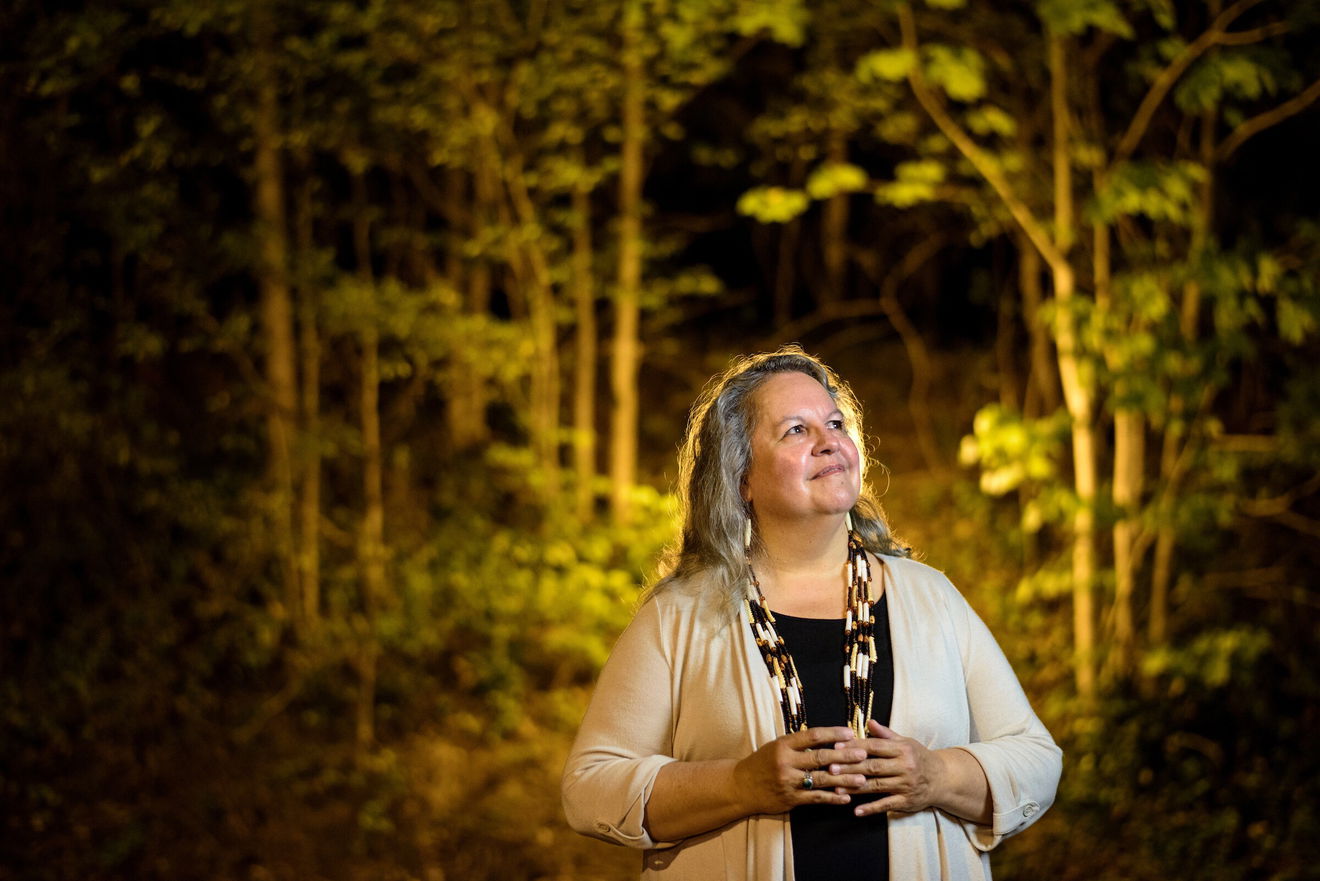
The very beautiful Robin Wall Kimmerer.
Planting standard size trees
If you plant a standard, or larger, tree, her care is different to planting a whip.
Once planted, these larger trees will need watering until they are established.
We planted 5 at Beggars Rigg, and watered them regularly for the first three years. We also watered them yesterday.
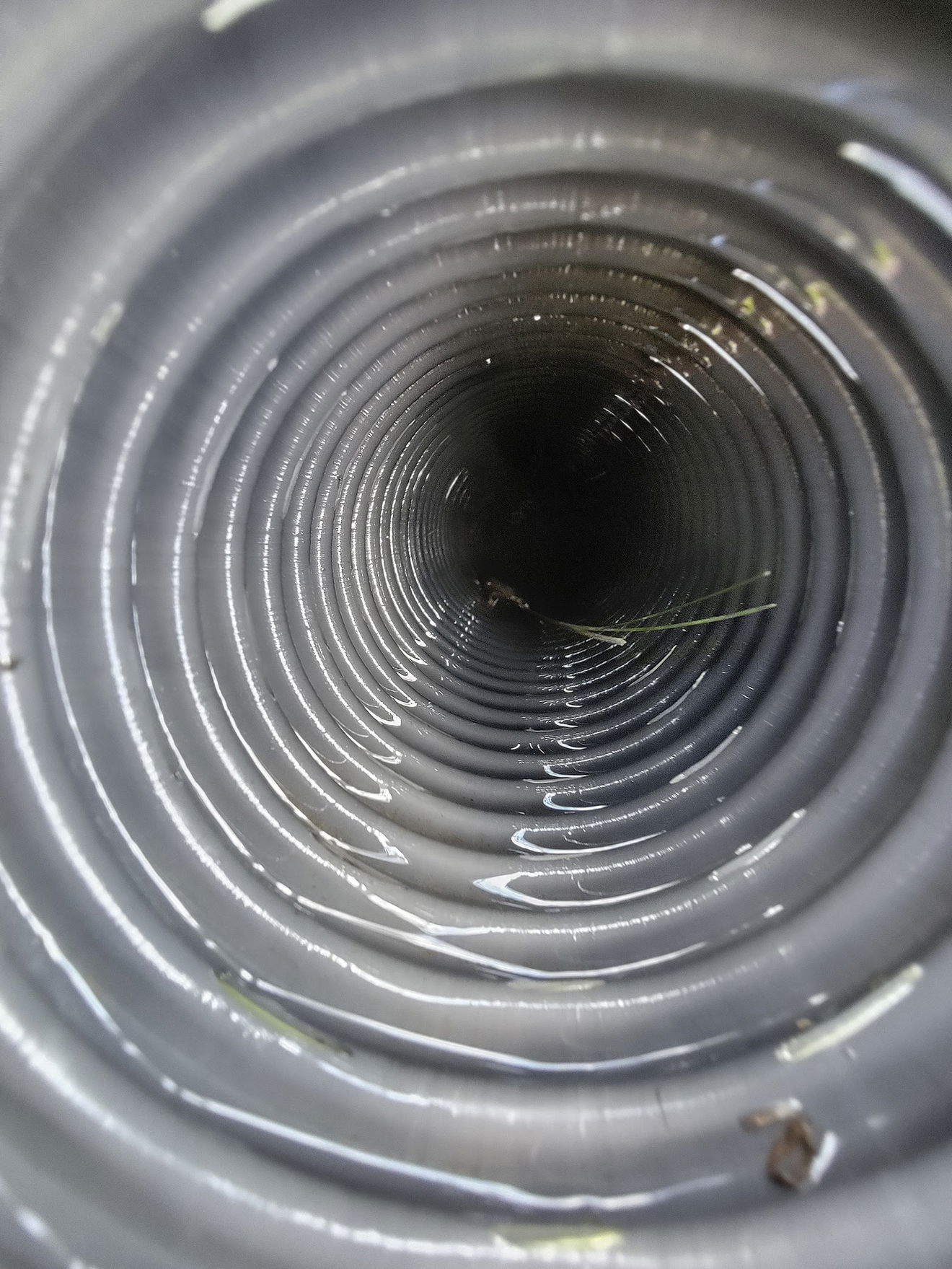


The poor Cherry tree is the only one which does not look as happy as she should be. We are all keeping an eye on her. And a great thank you to Alan Winlow, and Carol Murray, who both help with her.
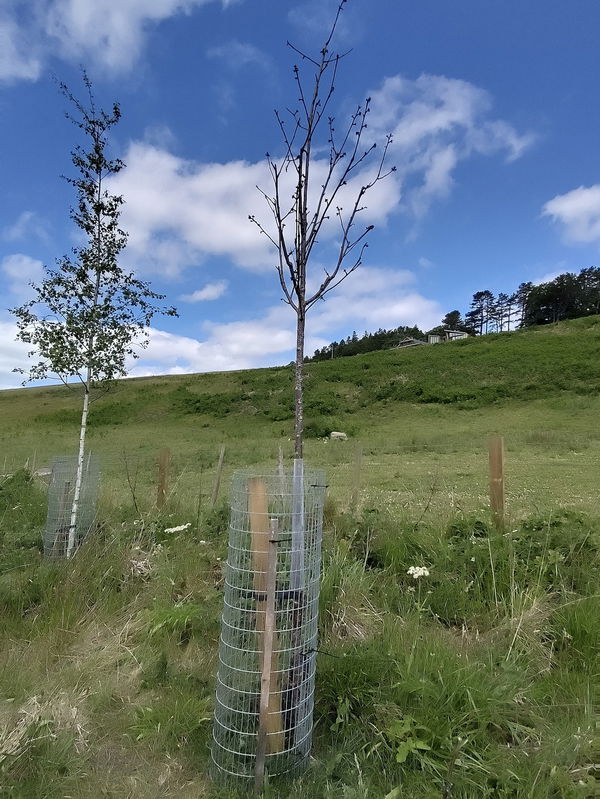
Poor Cherry, healthy Silver Birch to her left.
Planting Saplings
Once you have found the appropriate place to plant, after thinking about how big he will (hopefully) grow, and the surrounding features, you can then consider which will be the best type. This is changing a little, with climate change, so it is worth doing some research.
If you can mulch around the base, this will really help the saplings.
If you have opted to use tree guards, you need to keep an eye on them, and they do need to be removed once the trees can fend for themselves.
The Arboricultural Association has produced free guidance on Where to plant a tree, What to plant, How to plant, and Young tree aftercare.
Here is a guide to young tree establishment by The Arboricultural Association
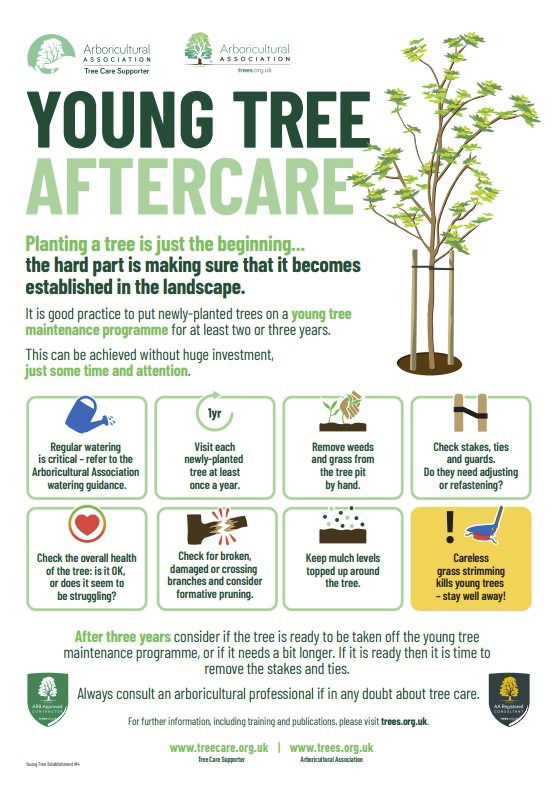
Fast and Slow growth
It is really interesting to note how differently the saplings are growing, even the same species. Most of the Oaks seem to be growing more slowly, the Silver Birch, Hawthorn, and Rowan are mostly quite big now. One Rowan has berries this year!
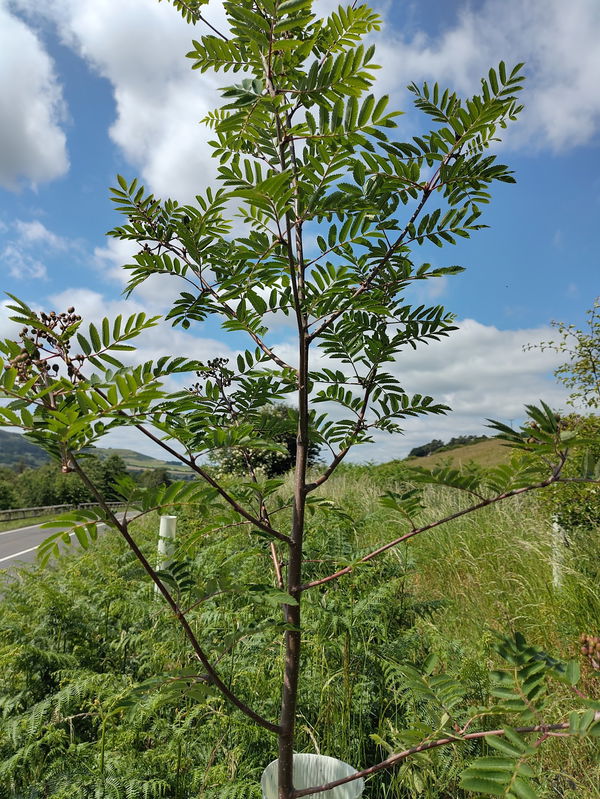


Tiny Oakling, and large Silver Birch!
Changing the type of tree guard
Often trees outgrow their guards, but still need protection. At the verge, we took off some of the guards, and put chicken wire cages in their place. This was where the trees are bigger, or trees, such as Horse Chestnut, who quickly grow branches and leaves that stick out, making the usual guard inappropriate.


Older Trees
We (Tree Wardens) do not have any say about the care of the older Standing People in our area.
It is heart-breaking to see the damage that continues to be inflicted on them, by chemical spraying and mowing too close and carelessly, around their base.


Should grass be removed from around trees?
There are some good reasons why it is left. But the thing is, are we leaving it for the sake of the tree? For the sake of the grass? Or because we have always had grass around a tree?
Here is an article about whether or not to remove grass around trees.
Although this is an American site, the information is helpful.
Happy ending!
It is very fulfilling tending to the Beggars Rigg trees. A team of us do it, and it gives us pleasure and happiness. We know you will all love to see how these trees grow and add to our environment, long after we Tree Wardens are gone.
What I really like is stopping to look closely at the plants and creatures that live on this verge.










Commonly found dog-poo-bag plant.
A Plea
To those responsible for the mowing of grass in public spaces - please consider the Standing People. There really isn't a need to bang and crash the machinery into their trunks. When you do, and they are injured, it can take a while for them to recover. Especially if the job is finished by chemicals being sprayed around their base. These can get into the tree, and cause great harm.
My wise and knowledgeable friend, Anthony Mills, recently told me the following.
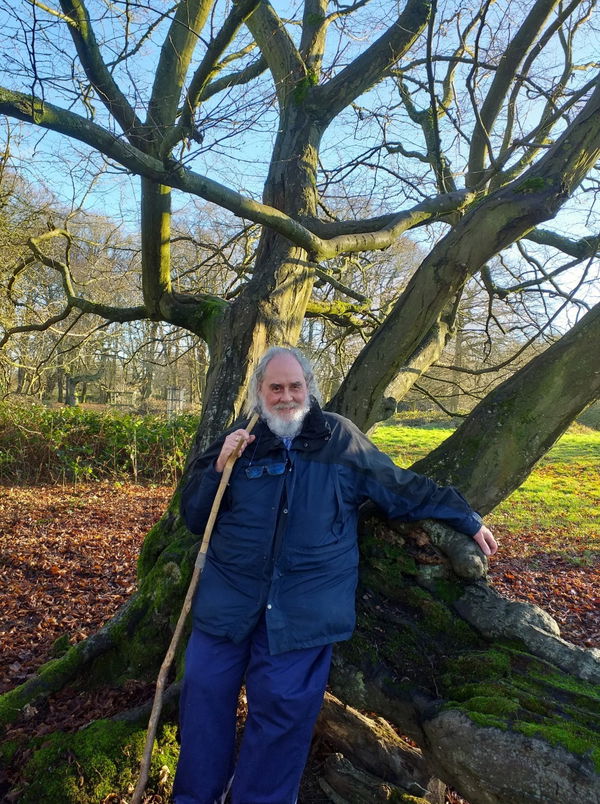
Anthony Mills
Having spent 40 years as a professional grounds person, I am all too familiar with the mowing mindset. It is deeply ingrained that the merest hint of any upstanding green is a grievous offence to the aesthetics of turf, and a risible reflection on the competence of the machinery operator.
I have mown and strimmed far too many of the trees that I myself planted in pursuit of this ludicrous ideal.
The compulsion to mow as close as possible to achieve that perfect flat lawn is unbelievably fixed. Newbies who leave ''Mohicans'' on the turns are laughed at and told to go back and do it again.
I came to really hate mowing....
I am also a qualified pesticides operator and was obliged to spend 6 weeks twice a year spraying, much of it round ''obstacles'' like trees, or verge furniture etc to avoid the necessity of strimming or mowing every 2 weeks.
I came to hate that as well!!
I showed Anthony some pictures of Ash Trees at the entrance to Beggars Rigg car park.
These trees have been sprayed for that purpose, which theoretically should prevent the kind of damage that is evident, except that the surrounds were probably sprayed after growth began in spring and so long growth still needed to be removed, hence whatever ongoing current damage can be seen.
The use of pre-emergent residual herbicides to prevent germination of weed or grass seeds, in conjunction with glyphosate [and even just glyphosate], to leave a ring of permanently bare soil is increasingly seen as unacceptable.'
That was the practice I was required to carry out [even though over the years many of the smaller or newer trees suffered growth restriction from the residual herbicide.
Obviously a far better solution is a mulch circle around the tree. but this has yet to acquire widespread acceptance as standard practice. Not least because the fertile substrate it provides is often quickly colonised by ''weeds'' [aka wildflowers in an alternative view!] - which require some form of ''tidying'' congruent with the ''park'' aesthetic. It's these attitudes which need to be changed.
*John Gonzalez, Standing Bear Network
John was writing about Robin being named one of the 100 most influential people of 2025, in Time Magazine.
What a wonderful piece of news, her influence on our behaviour and ways of being, can only be for the good of all of us - plant, animal, human.
